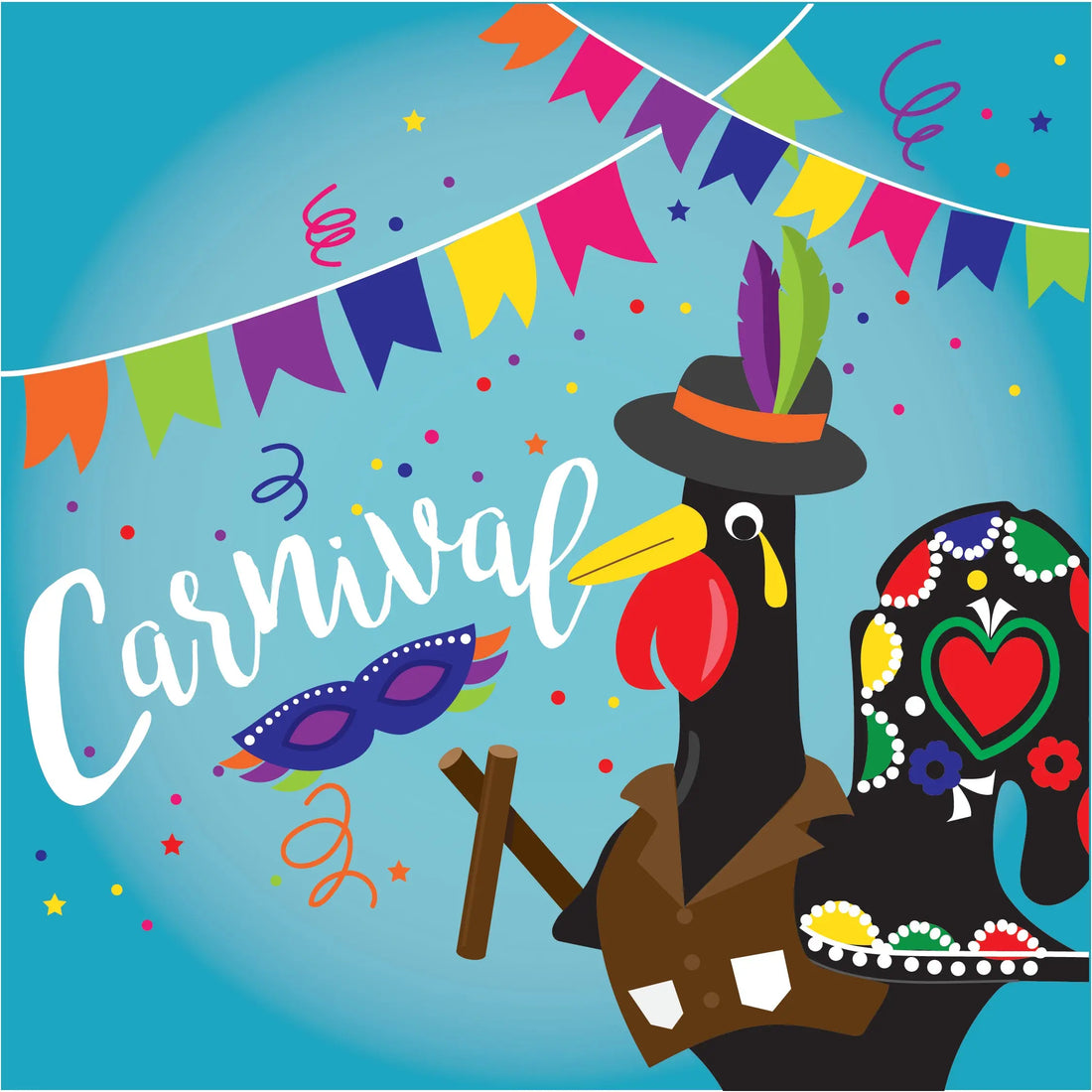
Carnaval is a complex combination of ancient practices mixed with modern magic. Carnaval, or "Entrudo", designates the period between Epiphany (January 6) and Lent, but normally refers to the three "fat days" leading up to Ash Wednesday (Sunday, Monday and Tuesday). Whether in Portugal, Aςores or Madeira, this time is a treasured one with practices just short of appearing maniacal. The energy behind Carnaval is largely because the somber season of Lent looms ahead. Most will agree that Lent, with its requirements of seriousness and personal sacrifices, goes down easier if one can eat, drink and party like it’s 1999. In a culture that generally loves to celebrate with music, pageantry, and food, Carnaval represents that love in its most expansive form!
Portuguese Carnaval celebrations rituals range from those that are hundreds of years old to the very modern. It’s not possible to do justice to this very diverse celebration in a short blog. For example, Careto (people disguised as the Devil) is one of the oldest traditions that’s still being practiced. It’s a pre-Roman, Celtic ritual in which people in costume, which includes masks, take advantage of their newfound anonymity to play tricks on others and indulge in mischievous acts free from public censure. There are celebrations with entertainment. An example is on the island of Terceira where “Danςas de Carnaval” was created. These are stage performances with local musicians and actors dressed up in elaborately intricate costumes. For those wanting a taste of this celebration in the U.S., there’s opportunity to take part as the Carnaval celebration is replicated in most areas where there’s a large population of Portuguese people. In addition to those beautiful productions, there are times when the Carnaval performance groups from the Açores and Portugal travel to perform in the U.S.
No discussion of any Portuguese custom would be complete without hauling in the topic of food. Because food during Carnaval is in the context of being Pre-Lenten, there are heavy offerings of meat. Be it served grilled on a stick, heaped high on a plate accompanied with potatoes or generously ladled into a bowl in a form of stew, meat rules. After all, for Catholics, it’ll be absent from their diet throughout the season of Lent. Not to be outdone by meat as the main character in a Carnaval celebration, drinks and dessert show up with panache! Carnaval, and all its flamboyant elements, means going to the outer limits of fun.
So why does the Portuguese culture, with its long history of conforming to the very strict norms of Catholism, have a celebration that includes relics of paganism, uninhibited behavior and immodest costumes? The answer lies within the quote from the famous Austrian writer, Germain Greer, “revolution is the celebration of the oppressed”. While Carnaval initially began as a Pre-Lenten gathering to eat the meat that would otherwise be wasted during the next 40 days, it’s widely acknowledged as an occasion to set aside life’s more serious side and have fun.
From your friends at Rooster Camisa, happy Carnaval!



